SUMMARY
This is AI generated summarization, which may have errors. For context, always refer to the full article.
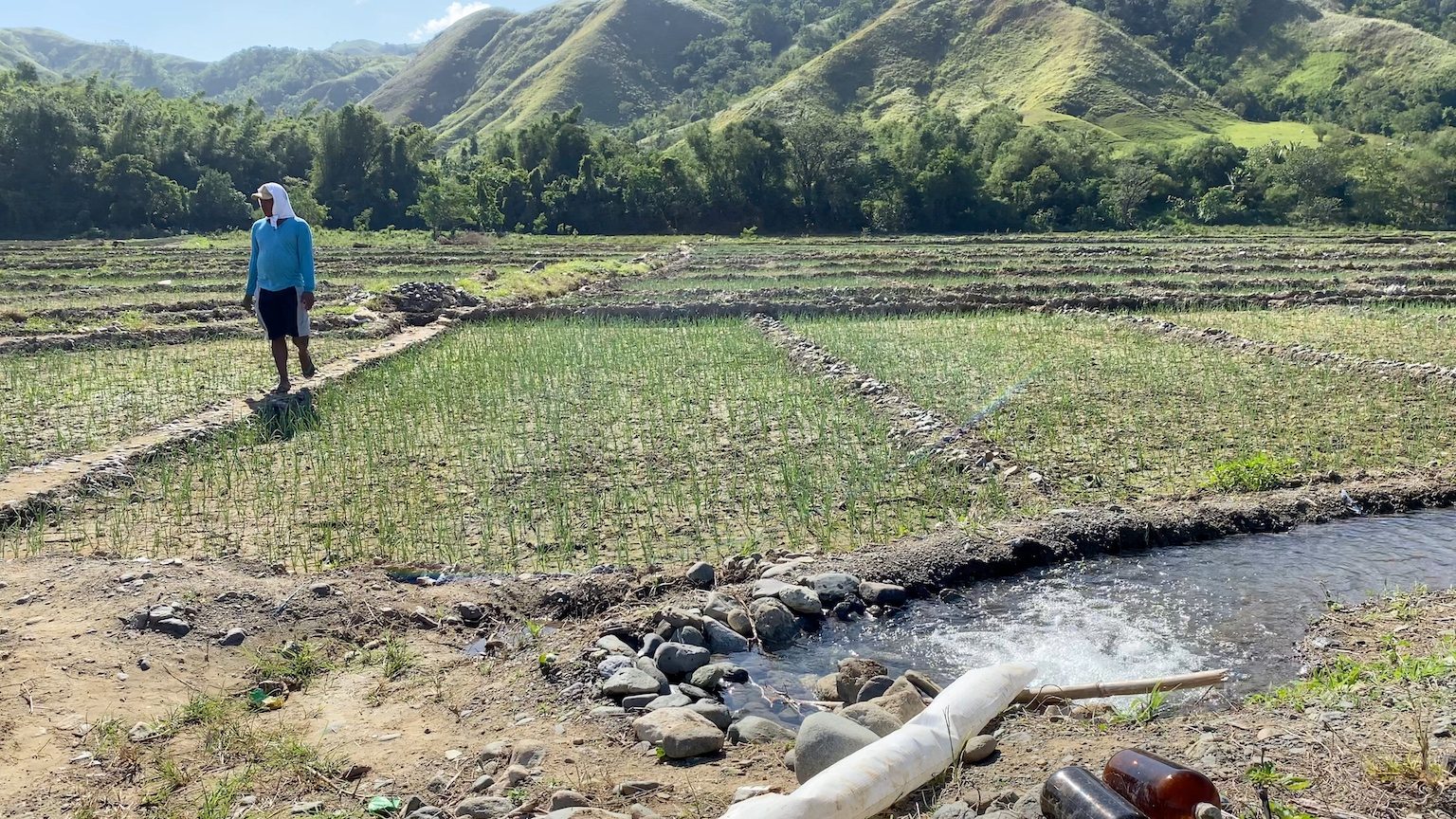
NUEVA ECIJA, Philippines – It was irrigation day on the farm, and the smell of diesel stained the air. Sputtering as it gulped down fuel, a rusty machine along the gravel banks of the Dupinga River pulled water up to Bernie Vegiga’s farm.
“Kita mo, umaandar maghapon ‘yung makina,” Bernie said, shaking his head. “Umuubos kami ng diesel diyan para patubig. Dire-diretso ang gastos niyan hanggang hindi maani ‘yan.”
(See, that machine there’s been running the whole day now. We’re burning up diesel just to water the farm. That’s a running cost until harvest time.)
Under the scorching heat in Gabaldon, the young bulbs need all the water they could get. While the onion tops in Bernie’s farm spring from the ground in impeccable, straight lines, they are still months away from harvest.
And yet the 48-year-old farmer bustles with energy. He works the fields early, at 3 am – long before any sunlight breaks over the lush, tall peaks of the Sierra Madre. He rests only when sleep overtakes him, sometimes past 10 in the evening.
“Halos na hindi na ako makakain sa oras. Halos dugo na ang ipawis ng farmers,” he said. (I almost never eat on time. We farmers might as well be sweating blood.)
Sometimes, the work is worth it. The fleeting promise of high onion prices leaves farmers eager to tend the fields. In late December 2022, a kilo of onions could sell for as much as P700 in the markets of Manila.
“Ang presyo ng sibuyas ngayon, napakaganda. Kaya kaming magsisibuyas, mga ganado kaming mag-alaga,” he explained. (The price of onions right now is great. That’s why onion farmers have so much drive to plant right now.)
Bernie has already sunk in more than P600,000 for land preparation, irrigation, fertilizers, and insecticides. By his calculations, he’d have to spend about P200,000 more before they were ready for harvest – all in the hope that he might catch the boon of high onion prices.
But onion prices are fickle, and on the farm, there are no promises.
“Sakit na ng mga nagsisibuyas ‘yun. Nalulugi, kahit lugi, magsisibuyas pa rin. Makikipagsapalaran. Baka sakali lang,” Bernie said, flashing a smile. “Baka sakaling magmahal.”
(That’s just what onion farmers do. Even if we keep losing money, we keep at it. We take the chance. You never know. Maybe prices will rise.)
Cost of growth

Hemmed between Dupinga’s many streams, Bernie’s farm spreads across nearly three hectares of fertile riverbanks. He holds the land close to his heart, having plowed and planted in these fields with his father since he was 15 years old.
About 33 long years later, Bernie now speaks with the quiet, confident air of someone who has known daily toil under a hot sun. He has, in many ways, perfected his craft.
It begins with land preparation. Bernie needs heavy machines to work his 2.7 hectares of land: a rotavator to break up and pulverize the soil, and a hand tractor for tillage. Renting these machines would already set him back P26,000.
Once the land is ready, the planting process begins. If Bernie had plenty of time, he would first scatter seeds in plots and have them grow wherever they could. After 45 days, he would then transplant them into neat, spaced-out lines to allow them room to grow – a process that required him to hire about 25 other farmhands.
But Bernie would, at times, also opt for the “direct” method. Rather than transplant the seeds, he would scatter the seeds and let them grow out. This cuts out some costs and saves about half a month. But when harvested, the onions are also much smaller.

To fill up his farm, he’d need about 15 kilos of seeds, which would end up costing about P73,500. It’s a huge sum in its own right, but according to Bernie, this is the manageable part.
It was the prohibitive costs of fertilizers and insecticides that bled Bernie dry. He estimated that he would spend upwards of P400,000 on fertilizers and another P160,000 on insecticides before the bulbs would finally be ready for harvest.
Farmers around the country complained about similarly high costs during the Senate hearing on January 16. According to the chair of the provincial cooperative development council of Occidental Mindoro, Ramon Silverio, the production cost of one hectare has already risen to as high as P300,000.
“’Yun sanang pananim namin, ‘wag nila masyadong babaan dahil kasi, kapag kami ang bumili ng buto nila, bumili kami ng pataba nila, presyo nila ang nasusunod. Sana kami, ganun din sa tanim namin,” Bernie said. “Talangang magtitiis ako kung ano magiging kapalaran mo bilang isang magsasaka. Wala kaming boses.”
(I just wish they didn’t price our produce so low because when we buy their seeds, their fertilizers, it’s their price we follow. I just wish it’d be the same for our crops. We just really have to endure whatever our fate as onion farmers might be. We don’t have a voice.)
Market journey

Come harvest time, Bernie’s worries shift from actual farmwork to logistics: transporting and selling his onions. This comes with its own challenges. For instance, the nearest paved road to the farm is more than two kilometers away. Getting there means wading through a river and crossing about six streams on a sunny day.
To get to the barrio or village, Bernie needs to run his tractor over rough gravel and muddy riverbeds. The engine roars and threatens to die out all along the way. Where the river runs particularly deep, the tractor’s wheels spin into the soft ground until a troop of farmhands budge it from its place.
But without clear farm-to-market roads or other marketing initiatives, the farmers in the area struggle with finding fair takers for their produce. This makes them especially vulnerable to exploitative middlemen and give them little say in negotiating prices. After all, big-time buyers don’t often make the arduous journey to Bernie’s farm to negotiate.
Instead, “agents” from the nearby village serve as go-betweens. Omay, a local farmers’ advocate with a voice as boisterous as his personality, explained how the work of agents cuts into the profits of farmers. Come harvest time, agents would visit Bernie at his farm to name their price – which was invariably lower than the already poor market rates.
“Wala akong nakikitang buyer. Puro ahente pumupunta sa bahay. Nalaman ko ang buyer hanggang highway lang. Tapos ‘yung ahente lang ‘yung bababa dito. Hindi ko alam kung may sindikato, may humaharang, hindi ko alam. Hindi ko na-meet ang buyer. Kaya ‘yung produkto, araw-araw, bumabagsak ‘yung presyo,” Omay said.
(I never see the buyer. It’s just agents coming to visit here. It turns out that buyers stop at the highway, and only agents come down all the way here. I don’t know if there’s a syndicate, if someone’s trying to control things, I don’t know. I never get to meet the buyer. That’s why the price of the produce goes down every day.)
Farmers don’t have the luxury of time to wait or negotiate for good prices. Omay explained that onions can only be stocked for so long before they dry up and lower in quality – or rot away altogether.
Agents know this, and they pressure farmers with ever-lowering prices as time ticks away.
As days pass between the visits of agents to Bernie’s farm, he’s left with little choice but to accept whatever offer is on the table.
“Kinakabahan na ako noon. Nabubulok, nababawasan na. Lilinisin uli namin. Pag’ naalis na namin, ‘yung 100 bags namin, 50 bags na lang kapag nilinis. Tapos mauulit na naman,” Bernie said. “Kaya ma-o-obliga kaming ibigay sa gusto nila. Masakit ang kapalaran ng magsisibuyas.”
(I already start to get nervous then. My onions are rotting and getting less by the day. I’d have to clean them up, and by the time I’m done cleaning them, my hundred bags would be down to just 50. And then it starts all over. So at one point, you’re just obligated to give it at their price. Fate is cruel to onion farmers.)
Even if the work of agents seemed to add little value, Bernie lamented that they seemed more secure in their income than the farmers who actually grow the crops.
“Mura na nga ang sibuyas, pero ‘yung ahente, hindi bumababa ang kita niya dahil per kilo siya,” Bernie said. “‘Yun lang ang puhunan niya. Laway.”
(Onions are already cheap as it is, but the income of agents never have to suffer since it’s per kilo. And all they need to do is talk.)
Unlivable prices

Agents are not where the problem of low prices end. After them, traders swoop in to take their own cuts of the profit.
For instance, onion farmers in San Jose, Occidental Mindoro languished with low prices of P8 per kilo, while traders raked in massive profits, squirreling away onions in cold storages and selling them for P700 a kilo once supplies thinned out.
Even here in Gabaldon, Bernie feared farmgate prices would once again drop to unlivable levels. During the past harvest season, prices settled below P10 per kilo, as middlemen descended to take their cuts. He and many other farmers faced enormous losses.
“Wala na silang pakialam kung papaano naging proseso noon. Wala silang pakialam. Basta ang importante, kumita sila,” Bernie said in a rare display of anger.
(They don’t care about the process. They don’t care at all. All that matters to them is they make money.)
While cold storages – facilities that can keep harvested onions in good condition for more than half a year – are present around Nueva Ecija, many farmers have had no access to them.
“’Yung iba, istino-storage. Eh katulad namin, wala kaming alokasyon. Umaasa lang kung ano ‘yung presyo. ‘Yan ang masakit. Kaming mga farmers, imbes na kami ang mag-storage doon, hindi. Bibilhin ng buyer ‘yong storage. Bibilhin sa ‘min ‘yung sibuyas namin nang mura kasi may storage sila. Eh kami, hindi kami puwedeng magmalaki dahil mabubulok ‘yung sibuyas namin dahil andiyan lang siya eh. Obligadong ibigay namin sa buyer ‘yung ani namin,” he said.
(The others place it in cold storage. But for people like us, we don’t get any space in there. We’re left to hang on to whatever the price is. That’s what hurts. We farmers, instead of storing there too, we can’t. Buyers take all the storage space. Then they buy our onions for cheap since they have storage space anyway. Well, we can’t really demand anything since our onions will just rot since we just leave them there. We’re pretty much obligated to give our harvest to the buyers.)
The Department of Agriculture (DA) maintains that cooperatives of onion producers are alloted slots in government-run cold storages. But what happens when the cooperatives themselves go bankrupt and dissolve?
“Kunwari, may isang kooperatiba, meron silang lugar doon sa storage na sila lang ang puwedeng pumasok. Kaya nga, ‘yun lang, ‘yung mga kooperatiba dito, nalugi,” Bernie explained. “Wala na, ayaw na nila. Sapalaran lang. Ang daming umiyak noong nakaaran.”
(Say there’s a cooperative, they’d have a place in the cold storage where only they can place their stocks. But that’s the problem, the cooperatives here all went bankrupt. They quit. It’s all about taking your chances. So many farmers were left crying here last harvest season.)

With the government lacking in support and cooperatives themselves going belly-up, many farmers must contend with low prices on their own. During the past harvest season, Bernie managed to sell his onions for only P17 per kilo – which, he estimated, wasn’t even enough to cover a fourth of the cost.
In his 33 years working as a farmer, the highest he’s ever earned was P60 a kilo. And back then, the prices of inputs like fertilizer were much cheaper too.
If farmers were empowered to set a livable price, how much would they sell their onions for? A P100 per kilo is all they would need to recoup their costs and make enough to survive, according to Bernie. Kaakibat Provincial Cooperative Council chairman Ramon Silverio made a similar call for a minimum farmgate price of P100 as farmers from Occidental Mindoro faced mounting debt.
“Bigyan ‘nyo po kami ng seguridad na ang aming farmgate price ay huwag po bababa ng P100 para naman kami ay makabawi sa lugi namin noong nakaraan. Kasi kung ganun po ang gagawin parati ng national DA na kami ay patayin sa tuwing aming pag-harvest, mawalan po kami ng gana,” Silverio said during the January 16 Senate hearing.
(Give us some guarantee that our farmgate prices won’t fall below P100 so that we could at least recoup our losses from before. Because if the national DA keeps killing us every harvest time, we’ll lose our drive.)
Grief of debt

Most times, farmers don’t even make enough to replenish the capital they need to buy seeds, fertilizers, and other inputs for their next planting season, meaning they have to take on more debt. And when they do earn a little, that mostly goes off to paying for the interest.
“Nagpapakahirap kami para sa interest ng utang,” he said. “Utang ang matitira, tapos ‘yung lupang kailangan mong tamnan sa susunod, hindi na puwede dahil ibabayad mo na siya ng utang doon sa pinagkuhanan mo. Mawawalan ka na ng tatrabahuin.”
(We’re working so hard just to pay off the interest of our debt. All that we’re left with is debt, and we won’t even have the land that we need to plant for the next season since we need to give it up to pay for our debts. We won’t have anything left to work on.)
With how low prices are, Bernie confided that farmers are losing hope.
“Hindi lang ako. Marami. Halos lahat ng magsasaka. Hanggang sa may mga nagpapakamatay na nga. Di makayanan ‘yung stress. Umaabot ang magsasaka hanggang sa nagpapakamatay,” he said.
(It’s not just me. A lot of farmers are feeling it. Some even fall to the point of taking their own lives. They just couldn’t take the stress anymore. Farmers reach the point of suicide.)
We’ve repeatedly seen that desperate economic situations can heighten tendencies of self-destructive behavior. In 2021, Roger Gallardo, an onion farmer in Bayambang, Pampanga had taken his own life after an armyworm infestation destroyed their crops and left them buried in debt reaching into the millions. (READ: As onion prices fall ahead of imports, farmers’ livelihoods, lives at risk)
He was one of five other onion farmers in his village who had allegedly taken their own lives during that season. Although Bayambang Mayor Niña Jose-Quiambao disputed the rash of suicides, for Bernie, the incidents hit painfully close to home.
“Kailan lang, diyan sa may Tagumpay, nasiraan siya, nalapnos, namatay. Eh, million na ‘yung utang,” Bernie said, voice dying to a whisper. “Nagpakamatay siya para wala na siyang problema.”
(Just recently, there at Barangay Tagumpay, his crops were hit with soft rot. They all died. Well, he was already a million in debt. He just took his own life so he wouldn’t have any more problems.)
The same dark emotions sometimes hung over Bernie’s village in Ligaya. Still, he fought on, hopeful that one day, price would improve and fairer marketing practices would arise. Farmers’ advocates like Omay are looking toward collective action in the fight to find their voice against agents and traders.
“Hangga’t ganyan ang sistema na walang humahawak at laging may namamagitan na ahente, mananatili nang mananatili si farmer na hindi nasusunod sa presyo,” Omay said. “Pero kung ma-centralize lang sana sila na, oh, lahat ng harvest ni Ligaya ilagay niyo sa barangay hall. Diretso na lahat ng buyer sa barangay hall. Ang mga magbi-bid sila. Walang magbi-bid na ibang sasabihin mong ahente.”
(As long as the system remains the way it is, without anyone managing it and letting agents squeeze in between, farmers will never get to name their price. But we need someone to centralize the farmers and bring all their harvest in Barangay Ligaya to the village hall. All buyers could go directly to the village hall. They’ll be the ones to bid. You won’t have any agents bidding anymore.)
So far, the local government hasn’t made any effort to centralize the marketing process of their village’s harvest, even if Bernie estimated 90% of their residents are farmers.
Encroaching imports

Onion farmers have many enemies. Bernie battled armyworm infestations that could quite literally eat up his plantation in a day. He weathered storms that increasingly pulled more of his land into the river’s dead gravel bed. But this year, he faced yet another challenge – this time, it was man-made. The imminent arrival of cheap onion imports could drive prices down just as farmers begin their harvest season.
“Malaking sabotahe ‘yung ginagawa nila sa mga farmers. Sinasabayan nila ang anihan, saka sila mag-i-import,” Bernie said. (They’re sabotaging us farmers big-time. They’re bringing in imports just as we’re beginning to harvest.)
The DA has made the controversial decision to not import onions late in 2022, even as supplies were already thinning out. However, just as the January harvest season was set to start for many farmers, the DA announced that it had allowed the importation of 21,060 metric tons of onions to address soaring onion prices.
And while it may bring some consumer relief in the short-term as imported onions flood the markets, it also means that traders can now use the imported supplies as a bargaining price to buy the harvest of local farmers at an even lower price.
Farmers’ groups have criticized the move, saying that the government should have permitted imports to enter during late 2022 to prevent onion prices from going up and avoid a clash with the harvest season. Bernie agreed.
“Noon pa sana sila nag-import, hindi umabot nang ganyang kalaking halaga ng sibuyas. Ngayon sasabayan nila ang harvest dito sa ‘min. Eh papaano naman ang mga farmers?” he said. “Kahit mga June lang, wala na eh. Nakaani na lahat eh. Puwede na sila mag-import kapag naka-cold storage na ‘yung mga nandito para hindi lumobo nang husto ang presyo ng sibuyas. Eh kaso, ngayon sila mag-i-import, mag-aanihan na tayo, paano?”
(They should have imported long ago, then the market price of onions wouldn’t have been this high. Now, they’re going to clash again with the harvest. What about the farmers? Even if they started importing in June, it’d be fine, but they didn’t. At that time, we’d all be done with our harvests. They could import then since all the onions would have already been in cold storage, and that way the price wouldn’t have jacked up. But they’re importing now, and the harvest season is about to start. What happens now?)
Bernie hopes that since the issue of importation was raised during the Senate discussion, senators would stop the arrival of imports – or at least mitigate its effect. But as weeks passed after the hearing, nothing happened.
“Minsan nagsasalita sila sa Senado, nagsisi-oo lang, pero pagdating dito sa ground? Hindi nangyayari sa ground. Kasi nga, nandoon lang sila nag-uusap doon sa mga opisina. Hindi nila nakikita ‘yung ground situation,” Omay lamented. “Lahat, nagsi-oo. Pero nagsusunod? Sinong nagsusumbong – farmer para pumunta sa Senado – ‘hindi nasunod yung usapan!’ ‘Yan ang masakit sa katotohanan.“
(Sometimes when they’re talking in the Senate, they just nod and say yes, but here on the ground? It doesn’t happen here on the ground. They’re just talking there in their offices. They don’t even see the ground situation. Everyone just says yes. But is it followed? Who’s even going to report it? Do they expect farmers to go to the Senate and say, “The agreement wasn’t followed!” That’s the sad truth.)
A farmer’s dream

Now, as prices threaten to again swing even lower with the looming arrival of onion imports, Bernie is worried that he would suffer big losses come harvest season – setting back the dreams he has for his family once again.
“Kawawang-kawawa na rin kasi kami. Hirap talaga buhay namin, talagang buwis buhay kami. Wala naman kaming iba ring inaasahan. Ganito na lang din kasi pinag-aral mga anak ko,” he said. “‘Yun lang matupad namin ‘yung mga pangarap ng mga anak namin, masaya na kaming mga magulang eh.”
(We’re already so helpless. Our lives are so difficult, we’re really risking our lives. It’s not like we have anything to rely on either. After all, this is how I paid for all my children’s education. As long as we get to make the dreams of our kids come true, that’s already enough for us parents.)
Through decades of grueling farmwork under the summer sun, Bernie has raised all four of his children. He has been working to save enough money for his third child to pursue a better life abroad.
“Medyo may edad na rin ako. Matanda na rin. Huwag naman sana pati kayong mga anak ko ay magmamakapagod. Pag-a-abroadin ko na lang kayo para ‘yung hirap na naranas ko dati, hindi ‘nyo maranas,” he said, his voice trailing into a near whisper once again. “Sana naman mapakinggan kami.”
(I’m getting old. I don’t want my children to have to work this hard. I’ll just send them abroad so that the difficulties that I experienced, they wouldn’t have to suffer them. I hope people listen to us.)
He stood watching his crops, wondering when the next dark clouds would come over Ligaya. He had survived floods, pests, even an indifferent government.
And in the wake of another bad harvest season? Bernie said he would stay on his farm, working his land for as long as he could – and for as long as it was his.
“Hindi kami puwedeng huminto dahil kasi, ‘yan ang pangunahing hanap-buhay namin – malugi, kumita. ‘Yun laging sinasabi nito, bangon lang,” he went on, fist raised in defiance. “Laban lang. Sige, bangon!”
(We can’t stop because it’s our livelihood – whether we lose money or make money. That’s what we always say, rise again. Fight on. Yes, rise once more!) – Rappler.com
1 comment
How does this make you feel?
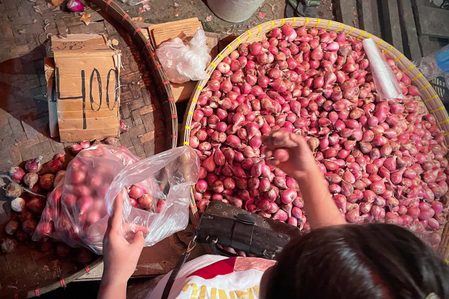
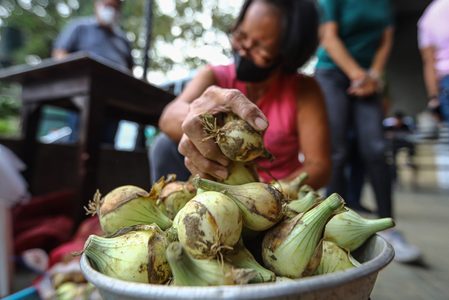
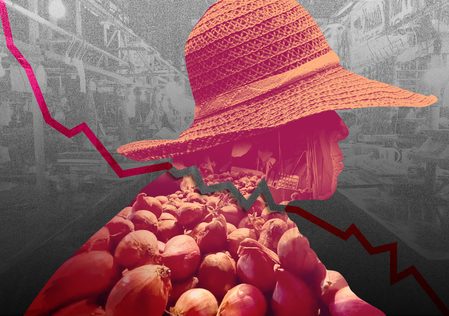
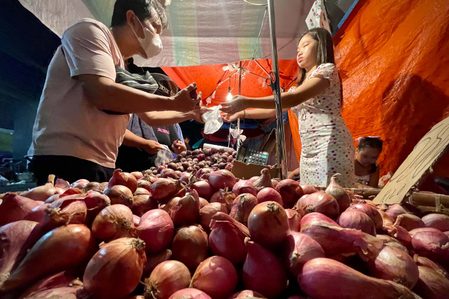

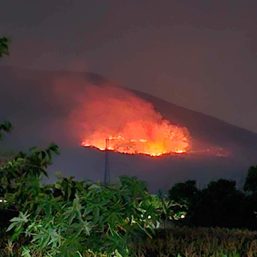
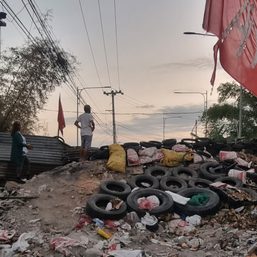

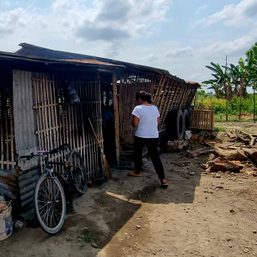
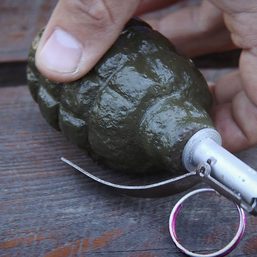
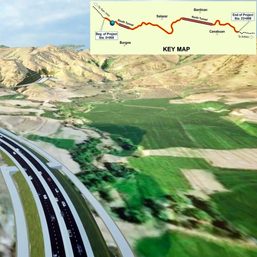



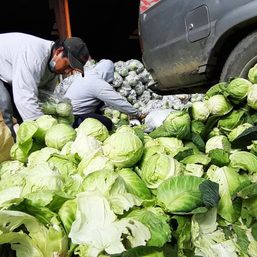
![[ANALYSIS] Investigating government’s engagement with the private sector in infrastructure](https://www.rappler.com/tachyon/2024/04/tl-gov-private-sectors-infra-04112024-1.jpg?resize=257%2C257&crop=435px%2C0px%2C1080px%2C1080px)
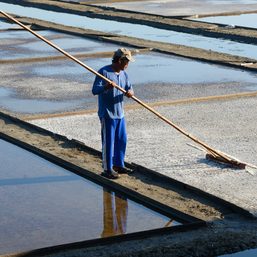
![[Rappler’s Best] The elusive big fish – and big fishers](https://www.rappler.com/tachyon/2024/04/The-elusive-big-fish-%E2%80%93-and-big-fishers.jpg?resize=257%2C257&crop=220px%2C0px%2C720px%2C720px)
https://www.ibm.com/case-studies/ethiopia-commodity-exchange
Perhaps this kind of exchange could be set up in the Philippines as well.